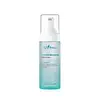What's inside
What's inside
 Key Ingredients
Key Ingredients

 Benefits
Benefits

 Concerns
Concerns

 Ingredients Side-by-side
Ingredients Side-by-side

Water
Skin ConditioningCocamidopropyl Betaine
CleansingSodium Lauroyl Methyl Isethionate
CleansingSodium Chloride
MaskingPolysorbate 20
EmulsifyingStyrax Japonicus Branch/Fruit/Leaf Extract
Skin ConditioningButylene Glycol
HumectantSaccharomyces Ferment
Skin ConditioningCryptomeria Japonica Leaf Extract
HumectantNelumbo Nucifera Leaf Extract
Skin ConditioningPinus Palustris Leaf Extract
TonicUlmus Davidiana Root Extract
Skin ConditioningOenothera Biennis Flower Extract
AstringentPueraria Lobata Root Extract
HumectantMelaleuca Alternifolia Leaf Oil
AntioxidantAllantoin
Skin ConditioningCaprylyl Glycol
EmollientEthylhexylglycerin
Skin ConditioningBetaine Salicylate
AntimicrobialCitric Acid
BufferingEthyl Hexanediol
Solvent1,2-Hexanediol
Skin ConditioningTrisodium Ethylenediamine Disuccinate
Sodium Benzoate
MaskingDisodium EDTA
Water, Cocamidopropyl Betaine, Sodium Lauroyl Methyl Isethionate, Sodium Chloride, Polysorbate 20, Styrax Japonicus Branch/Fruit/Leaf Extract, Butylene Glycol, Saccharomyces Ferment, Cryptomeria Japonica Leaf Extract, Nelumbo Nucifera Leaf Extract, Pinus Palustris Leaf Extract, Ulmus Davidiana Root Extract, Oenothera Biennis Flower Extract, Pueraria Lobata Root Extract, Melaleuca Alternifolia Leaf Oil, Allantoin, Caprylyl Glycol, Ethylhexylglycerin, Betaine Salicylate, Citric Acid, Ethyl Hexanediol, 1,2-Hexanediol, Trisodium Ethylenediamine Disuccinate, Sodium Benzoate, Disodium EDTA
Water
Skin ConditioningGlycerin
HumectantMyristic Acid
CleansingPalmitic Acid
EmollientLauric Acid
CleansingStearic Acid
CleansingPotassium Hydroxide
BufferingSorbitan Olivate
EmulsifyingGlyceryl Stearate
Emollient1,2-Hexanediol
Skin ConditioningPanthenol
Skin ConditioningVincetoxicum Atratum Extract
Skin ConditioningCeramide NP
Skin ConditioningMagnesium Ascorbyl Phosphate
AntioxidantArginine
MaskingAlanine
MaskingTyrosine
MaskingHistidine
HumectantLeucine
Skin ConditioningMethionine
Skin ConditioningBetaine
HumectantTrehalose
HumectantAllantoin
Skin ConditioningSodium Methyl Cocoyl Taurate
CleansingLauramidopropyl Betaine
CleansingSodium Chloride
MaskingPolyquaternium-10
Caprylyl Glycol
EmollientEthylhexylglycerin
Skin ConditioningWater, Glycerin, Myristic Acid, Palmitic Acid, Lauric Acid, Stearic Acid, Potassium Hydroxide, Sorbitan Olivate, Glyceryl Stearate, 1,2-Hexanediol, Panthenol, Vincetoxicum Atratum Extract, Ceramide NP, Magnesium Ascorbyl Phosphate, Arginine, Alanine, Tyrosine, Histidine, Leucine, Methionine, Betaine, Trehalose, Allantoin, Sodium Methyl Cocoyl Taurate, Lauramidopropyl Betaine, Sodium Chloride, Polyquaternium-10, Caprylyl Glycol, Ethylhexylglycerin
 Reviews
Reviews

Ingredients Explained
These ingredients are found in both products.
Ingredients higher up in an ingredient list are typically present in a larger amount.
1,2-Hexanediol is a synthetic liquid and another multi-functional powerhouse.
It is a:
- Humectant, drawing moisture into the skin
- Emollient, helping to soften skin
- Solvent, dispersing and stabilizing formulas
- Preservative booster, enhancing the antimicrobial activity of other preservatives
Allantoin is a soothing ingredient known for its protective and moisturizingg properties. Because of this, it is often added to products with strong active ingredients.
Studies show higher concentrations of this ingredient can promote wound healing.
Though it can be derived from the comfrey plant, allantoin is produced synthetically for cosmetic products to ensure purity.
Learn more about AllantoinCaprylyl Glycol is a humectant and emollient, meaning it attracts and preserves moisture.
It is a common ingredient in many products, especially those designed to hydrate skin. The primary benefits are retaining moisture, skin softening, and promoting a healthy skin barrier.
Though Caprylyl Glycol is an alcohol derived from fatty acids, it is not the kind that can dry out skin.
This ingredient is also used as a preservative to extend the life of products. It has slight antimicrobial properties.
Learn more about Caprylyl GlycolEthylhexylglycerin (we can't pronounce this either) is commonly used as a preservative and skin softener. It is derived from glyceryl.
You might see Ethylhexylglycerin often paired with other preservatives such as phenoxyethanol. Ethylhexylglycerin has been found to increase the effectiveness of these other preservatives.
Chances are, you eat sodium chloride every day. Sodium Chloride is also known as table salt.
This ingredient has many purposes in skincare: thickener, emulsifier, and exfoliator.
You'll most likely find this ingredient in cleansers where it is used to create a gel-like texture. As an emulsifier, it also prevents ingredients from separating.
There is much debate on whether this ingredient is comedogenic. The short answer - comedogenic ratings don't tell the whole story. Learn more about comegodenic ratings here.
The concensus about this ingredient causing acne seems to be divided. Research is needed to understand if this ingredient does cause acne.
Scrubs may use salt as the primary exfoliating ingredient.
Learn more about Sodium ChlorideWater. It's the most common cosmetic ingredient of all. You'll usually see it at the top of ingredient lists, meaning that it makes up the largest part of the product.
So why is it so popular? Water most often acts as a solvent - this means that it helps dissolve other ingredients into the formulation.
You'll also recognize water as that liquid we all need to stay alive. If you see this, drink a glass of water. Stay hydrated!
Learn more about Water